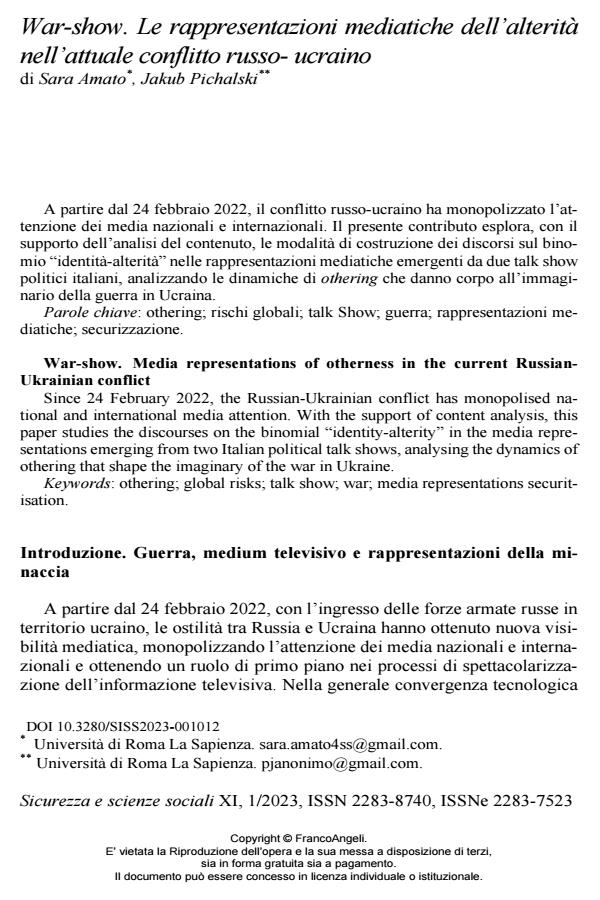War-show. Media representations of otherness in the current Russian-Ukrainian conflict
Journal title SICUREZZA E SCIENZE SOCIALI
Author/s Sara Amato, Jakub Pichalski
Publishing Year 2023 Issue 2023/1
Language Italian Pages 16 P. 133-148 File size 219 KB
DOI 10.3280/SISS2023-001012
DOI is like a bar code for intellectual property: to have more infomation
click here
Below, you can see the article first page
If you want to buy this article in PDF format, you can do it, following the instructions to buy download credits

FrancoAngeli is member of Publishers International Linking Association, Inc (PILA), a not-for-profit association which run the CrossRef service enabling links to and from online scholarly content.
Since 24 February 2022, the Russian-Ukrainian conflict has monopolised na-tional and international media attention. With the support of content analysis, this paper studies the discourses on the binomial""identity-alterity" in the media repre-sentations emerging from two Italian political talk shows, analysing the dynamics of othering that shape the imaginary of the war in Ukraine.
Keywords: othering; global risks; talk show; war; media representations securitisation
Sara Amato, Jakub Pichalski, War-show. Le rappresentazioni mediatiche dell’alterità nell’attuale conflitto russo-ucraino in "SICUREZZA E SCIENZE SOCIALI" 1/2023, pp 133-148, DOI: 10.3280/SISS2023-001012